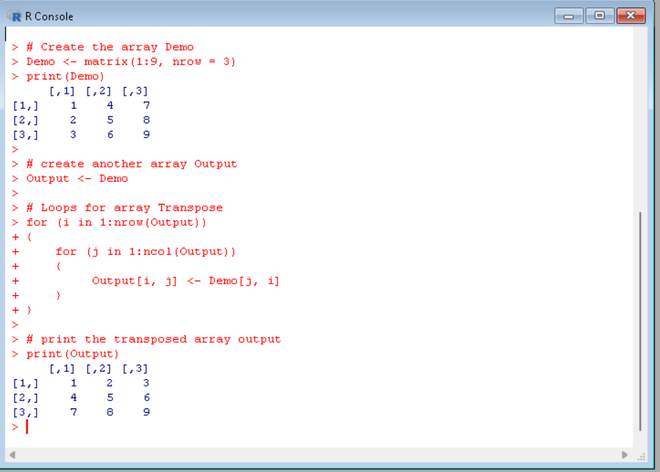R中的数组转置
在本文中,我们将讨论如何在 R 编程语言中转置数组。数组的转置是通过将行更改为列并将列更改为行来获得的。
Aij = Aji
其中 i 不等于 j,因此对角线保持不变。
例子:
Array demo[] ---> [1, 4, 7
2, 5, 8,
3, 6, 9]
Transpose of demo[]:
Output ---> [1, 2, 3
4, 5, 6
7, 8, 9]有两种方法可以在 R 中获取数组的转置:
方法 1:天真的方法
我们可以遍历数组并从行到列和从列到行分配对应的元素。
示例:数组的转置
R
# Create the array Demo
Demo <- matrix(1:9, nrow = 3)
print(Demo)
# create another array Output
Output <- Demo
# Loops for array Transpose
for (i in 1:nrow(Output))
{
for (j in 1:ncol(Output))
{
Output[i, j] <- Demo[j, i]
}
}
# print the transposed array output
print(Output)R
# Create demo array
Demo <- matrix(1:9, nrow = 3)
print(Demo)
# using t() function transpose Demo
Output <- t(Demo)
print(Output)输出:

方法二:使用 t()函数
我们可以使用内置函数t() 直接在 R 中转置数组。此函数将数组作为参数并返回其转置。
句法:
t(array)
示例:数组的转置
电阻
# Create demo array
Demo <- matrix(1:9, nrow = 3)
print(Demo)
# using t() function transpose Demo
Output <- t(Demo)
print(Output)
输出:
